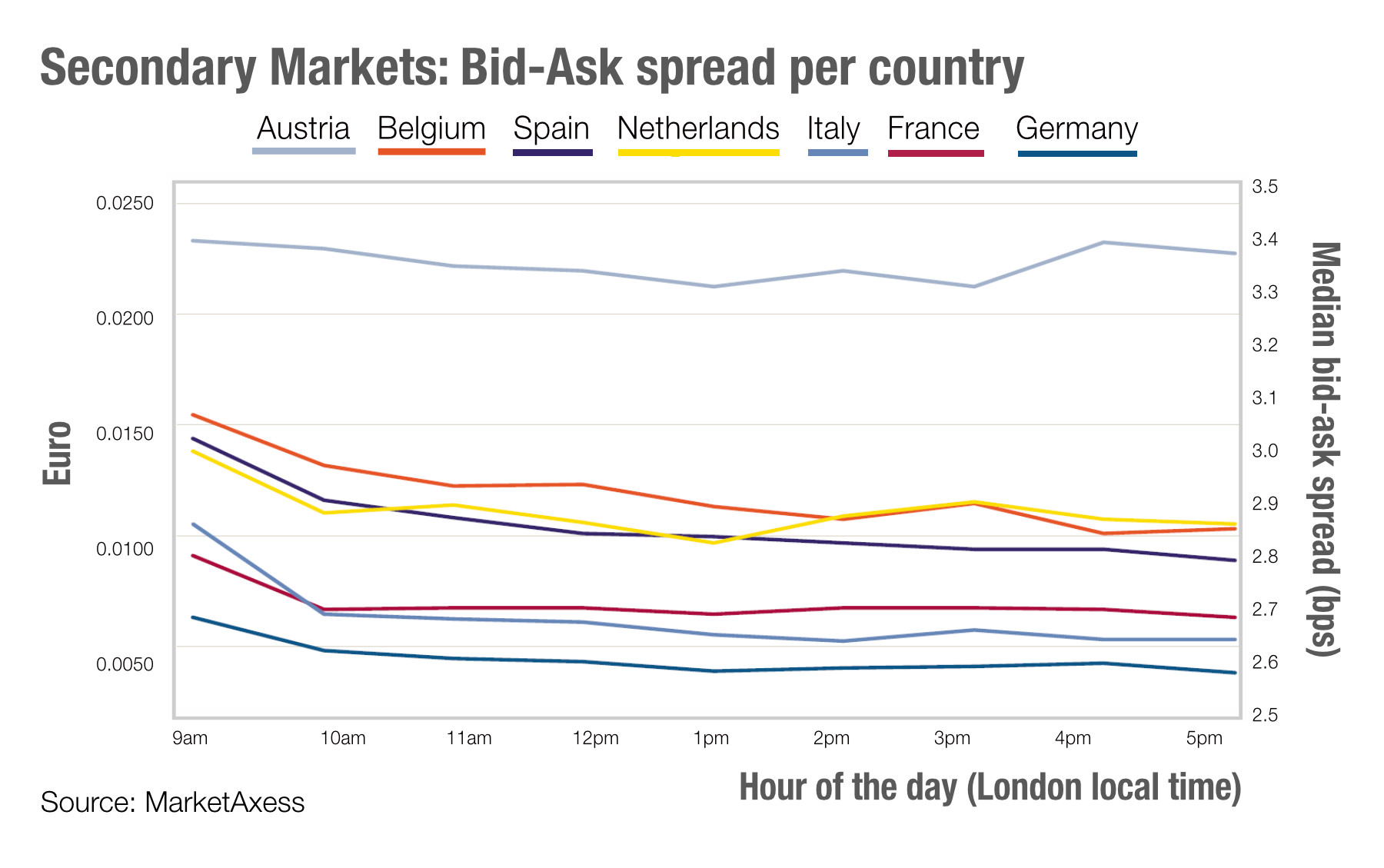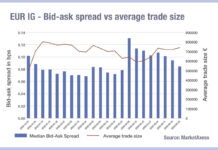
Following our analysis of when to trade into US markets, we examine spreads for European rates markets across the day. For overseas traders working European markets the key point about timing still holds – price formation drives tighter spreads through the day. However, in Europe, government bonds are fragmented across the multiple issuers, with the many corporate bonds on offer across the region having a range of benchmark govies. For a trader in Asia, North or South America, who is unable to trade the full market hours for Europe, we see once again that the temptation to work the part of the day that best fits their own office hours – early for APAC, later for US and LatAm could be a mistake.
Data from February 2021 from MarketAxess indicates that there are big differences in the pattern of bid-ask spreads for specific European government bonds (EGBs) based upon the time at which they are traded. The spread is only one consideration for traders of course – the level of liquidity accessible at a certain point is just as relevant. Limited liquidity might require that trades are only partially filled, leading to information leakage for the rest of the trade. That in turn will have a negative impact on any sell-side counterparties who take risk on the position.
Curiously there are some EGBs which do not adhere to the common pattern, in which the price becomes clearer over the day as price formation leads to an agreed level at which to trade. For Austrian and Dutch government bonds the bid-ask spread shows some volatility throughout the day.
The ability to access data every month, and to understand spread and volume activity against historical levels clearly has value for firms for whom the bid-ask spread can have a major impact on overall trading costs.
©Markets Media Europe 2025













